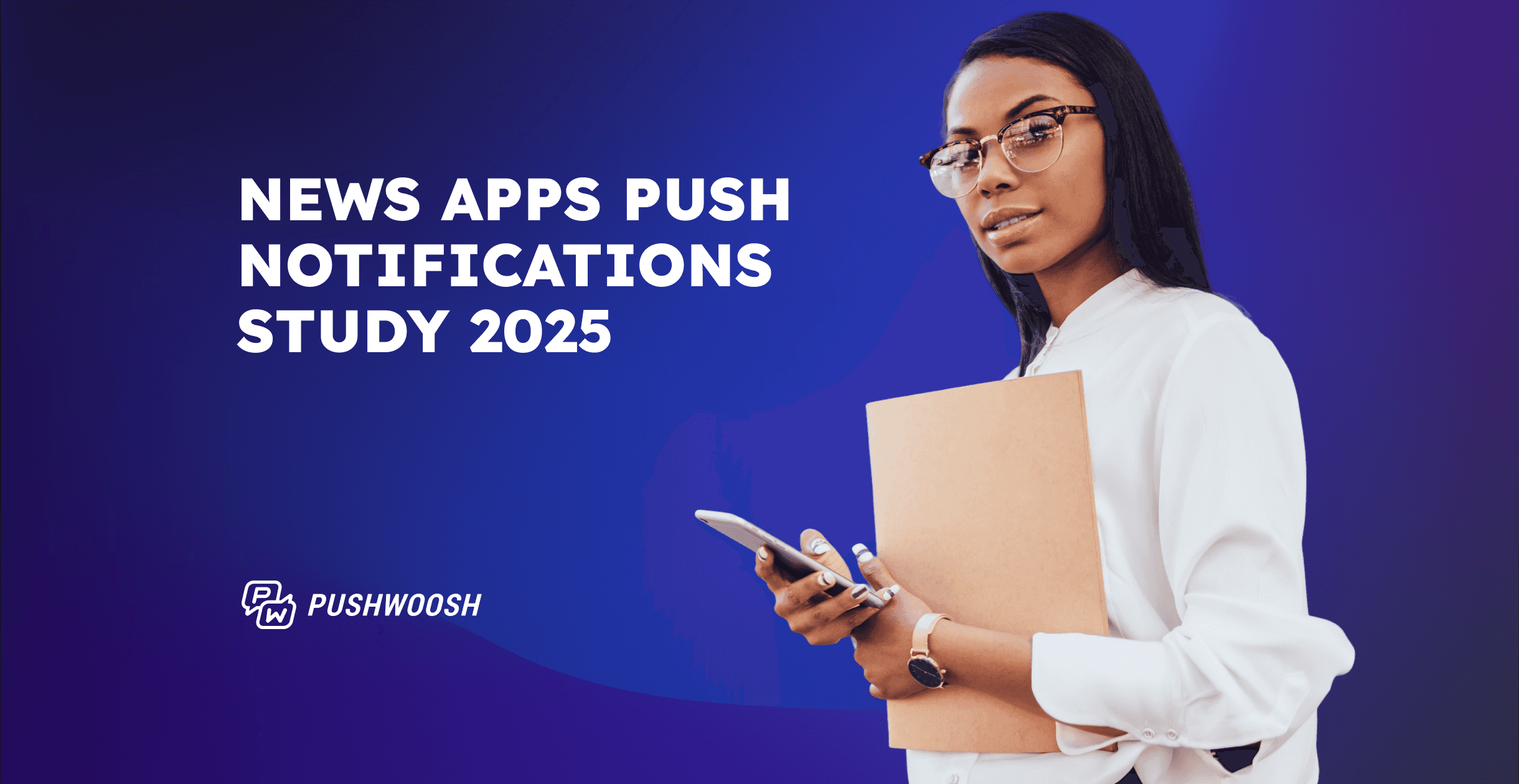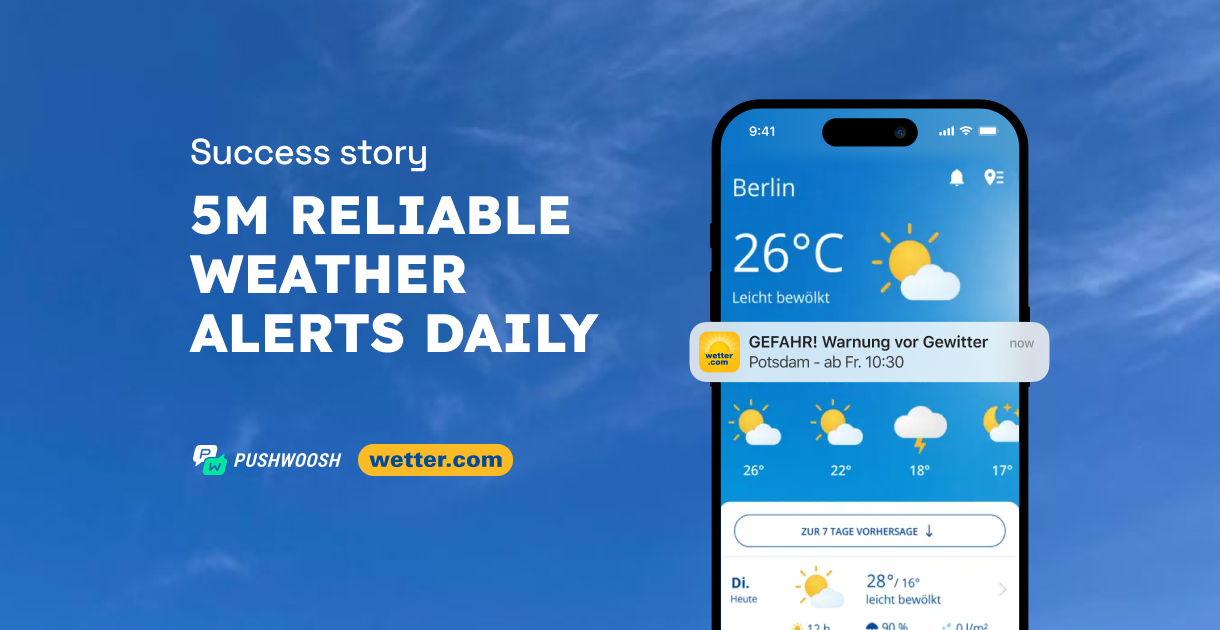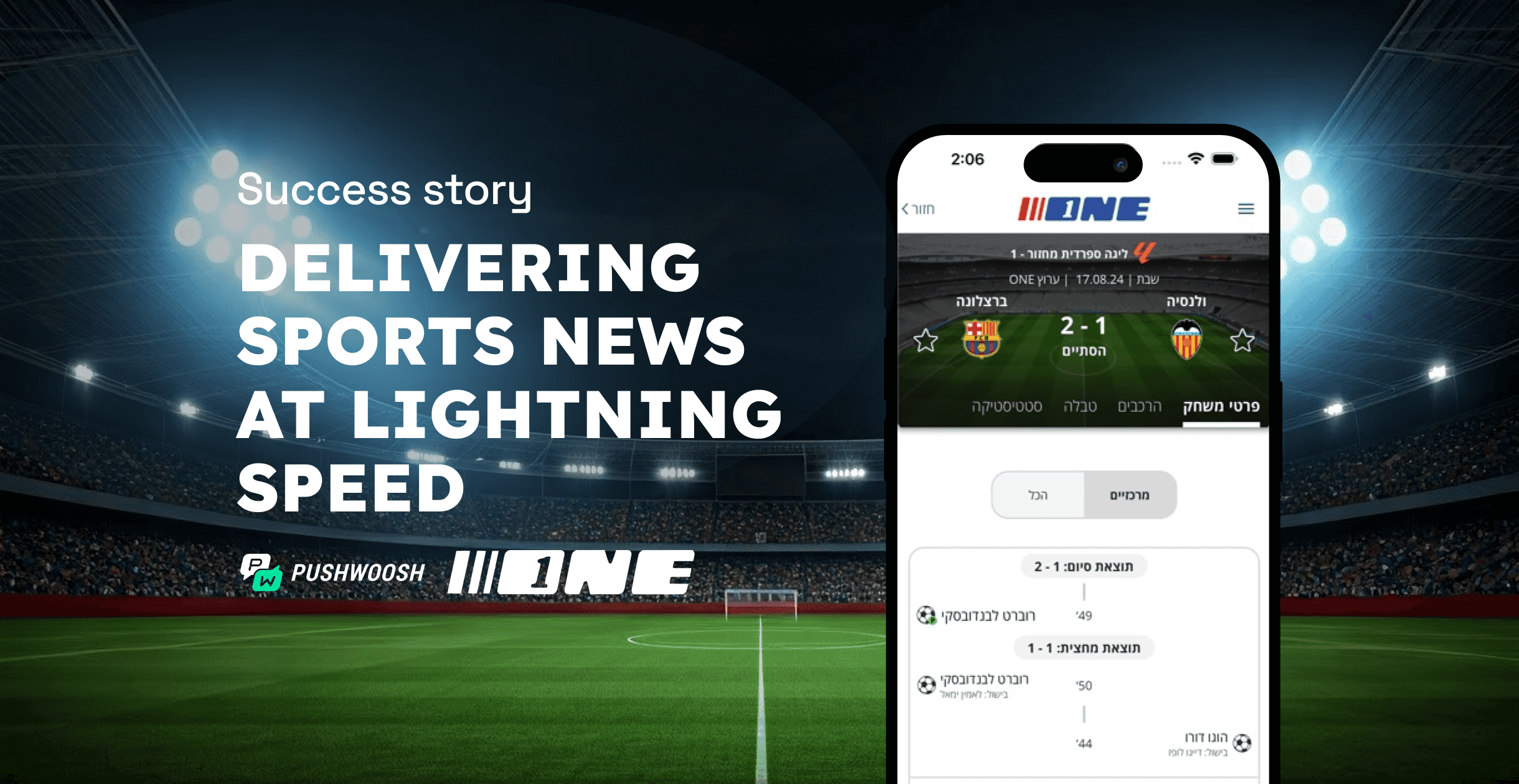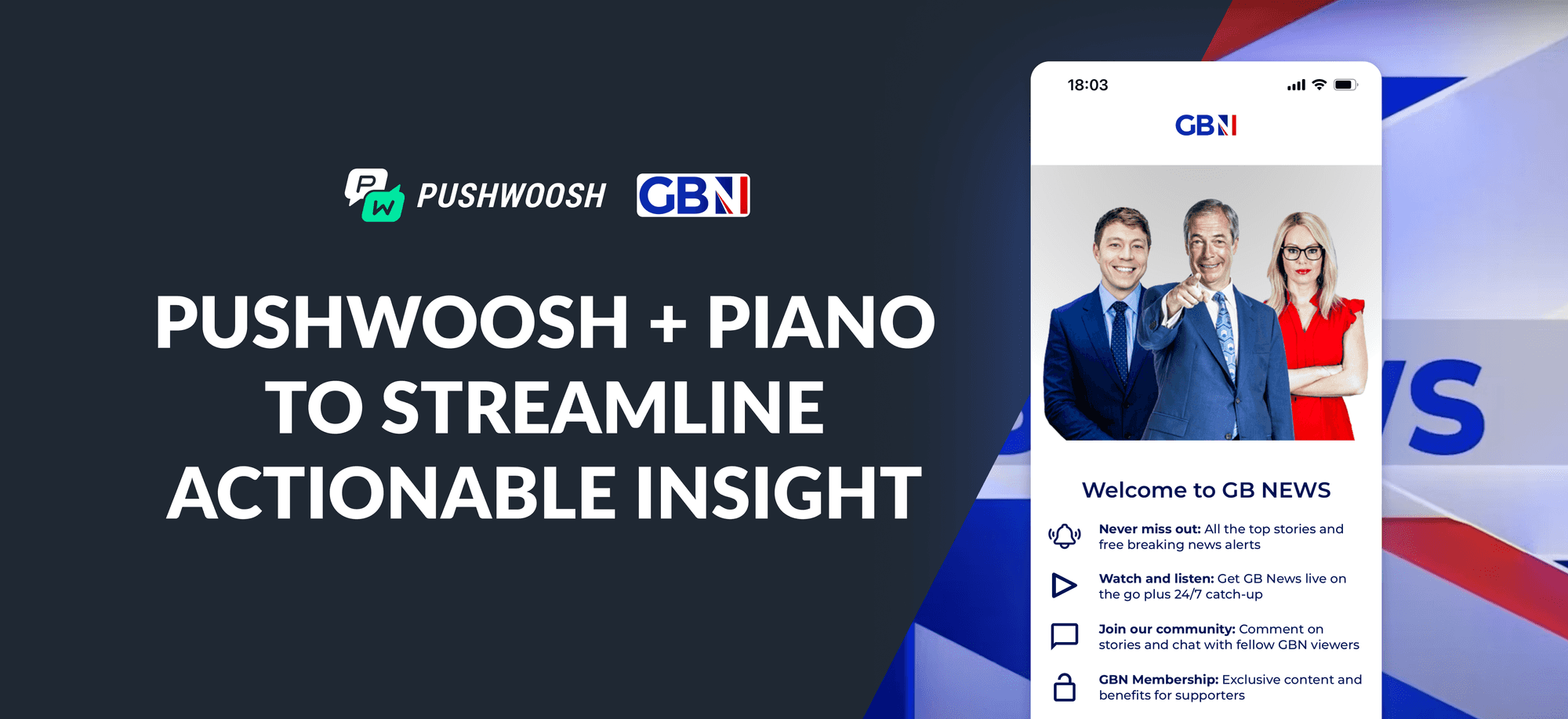How news apps engage users with push notifications (Pushwoosh study + expert tips)
From local publishers to global media brands, news apps rely on push notifications to keep their audiences informed and engaged. So, which engagement trends are shaping the industry today—and what factors are driving the most effective push strategies?
To find out, we analyzed push notification campaigns sent by 213 news apps between April 2024 and March 2025.
The study includes apps from Europe, India, Bangladesh, Israel, New Zealand, the Middle East, North and South Africa, the USA, as well as international publishers—offering a truly global view of industry practices.
The apps range from under 10,000 to over 1 million active subscribers.
To uncover what drives push performance, we examined frequency, timing, opt-in rates, as well as the real-world events that the pushes were tied to.
Our analysis is further enhanced by expert insights from Janie Ho, a media strategist with experience at NY Daily News, LinkedIn, CBS, ABC, and more—bringing real newsroom context to the numbers.
Push frequency varies widely across news apps
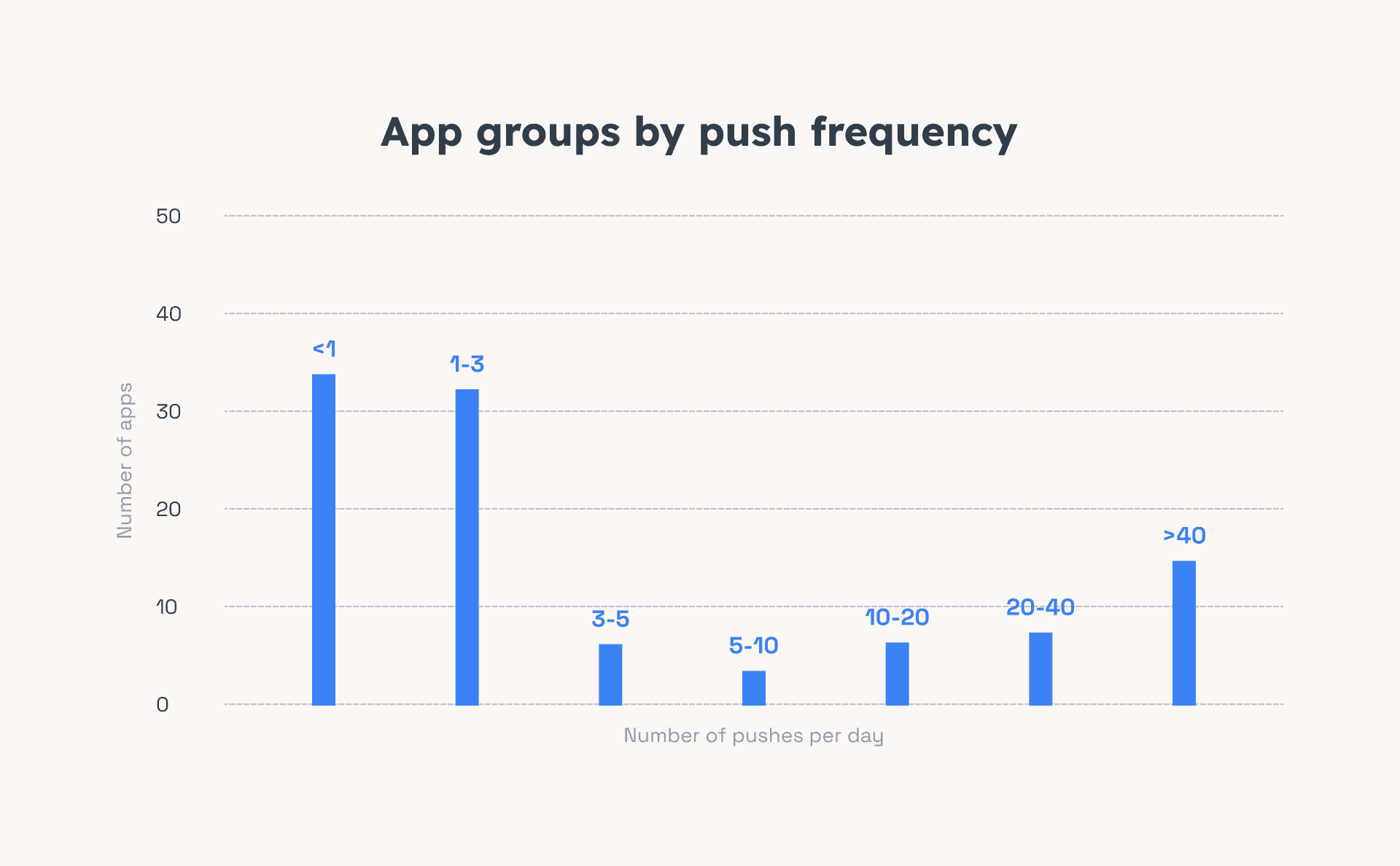
Our study shows that news apps vary in how many push notifications they send each day. While most send fewer than 3 messages a day, a noticeable number go much higher, with some sending over 40.
Apparently, each news app derives its own ideal frequency—shaped in part by its content focus, audience reach, and segmentation strategy. Some apps focus on select, timely alerts, while others aim to keep users constantly updated with breaking news and real-time coverage.
Push frequency has no real effect on unsubscribe rates
We asked ourselves whether the number of push notifications sent daily affects the unsubscribe rates for news apps.
The initial graphs suggest a trend: apps that send more push notifications tend to have higher opt-in rates.
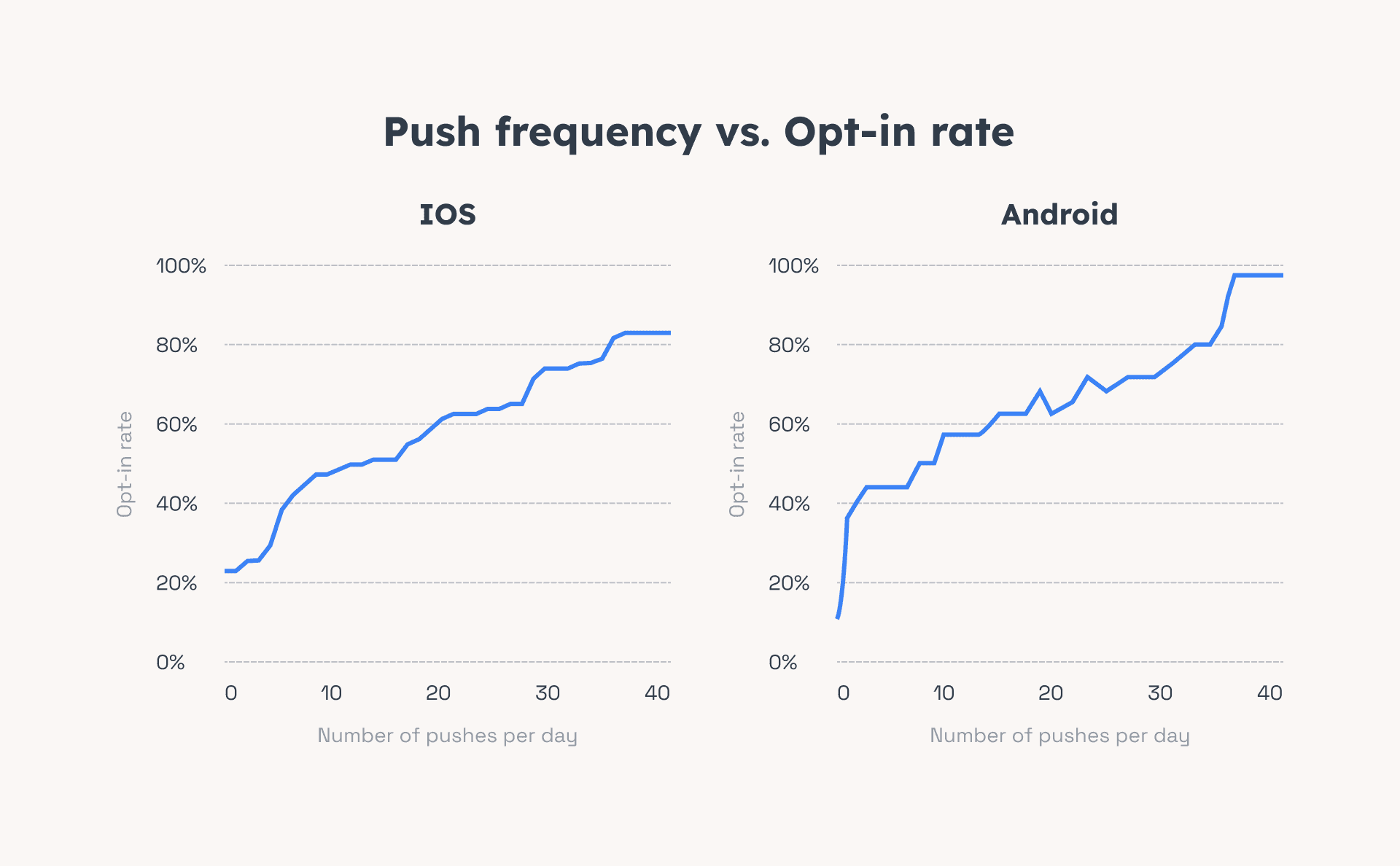
But is the relationship statistically significant?
To find out for sure, we calculated the correlation between these metrics:
| Metric pair | Correlation coefficient | Interpretation |
|---|---|---|
| Push frequency ↔️opt-in rate | -0.07 | Almost no correlation |
It turns out—there’s no real dependency.
Practical takeaway: You won’t lose your push subscribers whether you send push notifications frequently or less often—what really matters is delivering relevant, valuable messages to your audience.
Here’s how Janie Ho describes the meticulous work involved in crafting push notifications for the industry:
As a news editor, most of the time you send breaking alerts. You have seconds to determine which big story should go out over another and you have one minute to write a push: sharp and enticing, without any factual, stylistic, or grammatical errors. You can’t even rely on AI and autocorrect tools because news content has its unusual names, terms, and wacky details.
More pushes ≠ more clicks
It’s tempting to assume that sending more push notifications might lead to better engagement—after all, more visibility should mean more interaction, right? Not exactly.
In news apps, we observed that click-through rates (CTRs) don’t move in any predictable direction as the number of daily pushes increases:
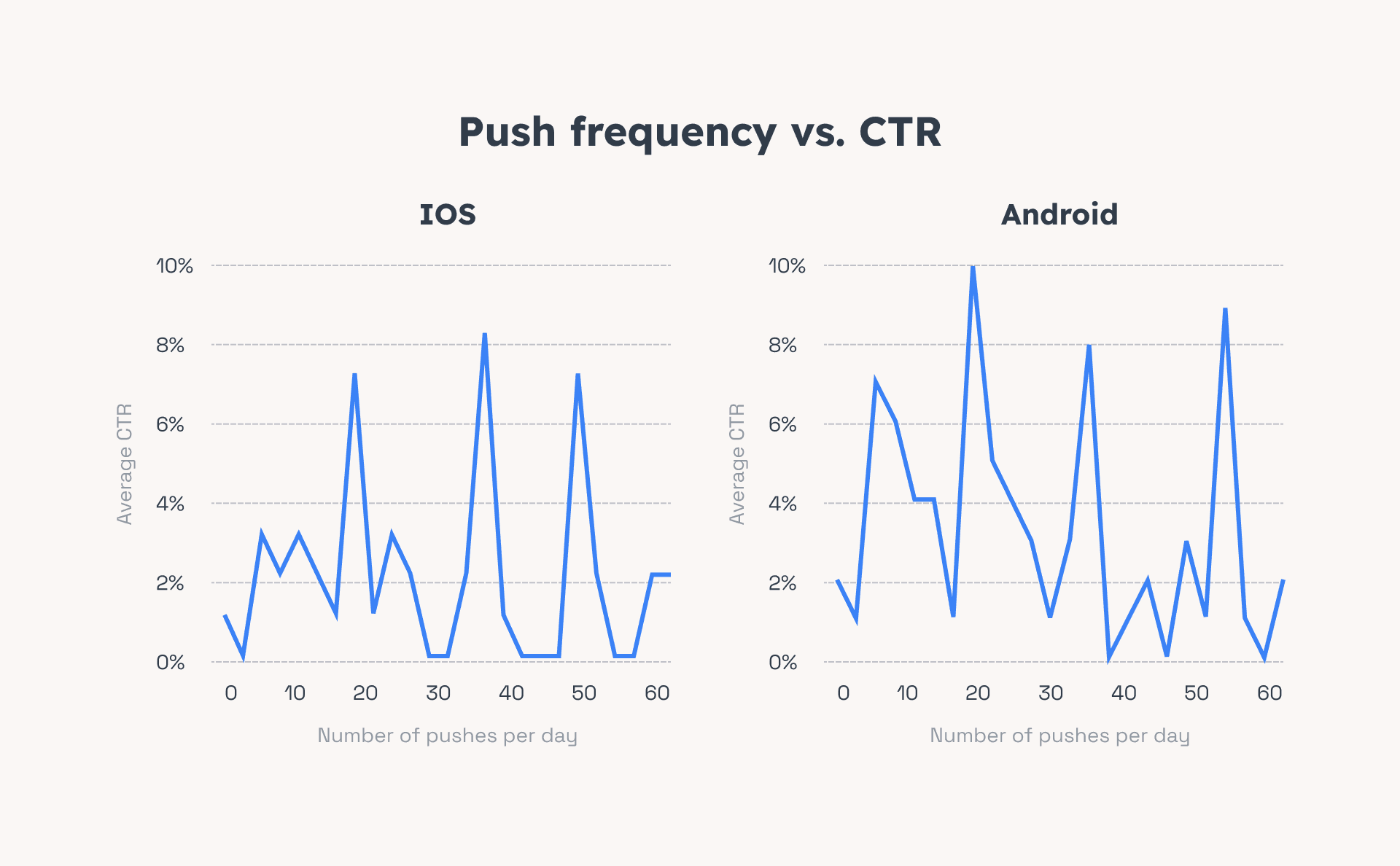
Some high-frequency senders saw solid results, others didn’t—and vice versa.
The correlation analysis confirms it: a weak negative correlation suggests push frequency alone doesn’t steer CTR:
| Metric pair | Correlation coefficient | Interpretation |
|---|---|---|
| Push frequency ↔️CTR | -0.19 | Week negative correlation |
So we dug deeper to understand what actually influences CTR in the news industry. We looked into opt-in rates, timing of the pushes, and the content topics as key factors.
Opt-in rates boost CTR — slightly, and mostly on iOS
We looked into whether having a larger opted-in audience correlates with stronger push notification performance. Could a higher opt-in rate lead to more clicks?
The correlation analysis showed that a higher opt-in rate might help increase CTR on iOS, but that doesn’t seem to happen on Android:
| Metric pair | Correlation coefficient | Interpretation |
|---|---|---|
| Opt-in rate ↔️CTR (iOS) | 0.32 | Moderate positive correlation |
| Opt-in rate ↔️CTR (Android) | 0.07 | Almost no correlation |
And this pattern is visually supported: we can see on the iOS graph that the CTR peaks tend to align with higher opt-in rates:
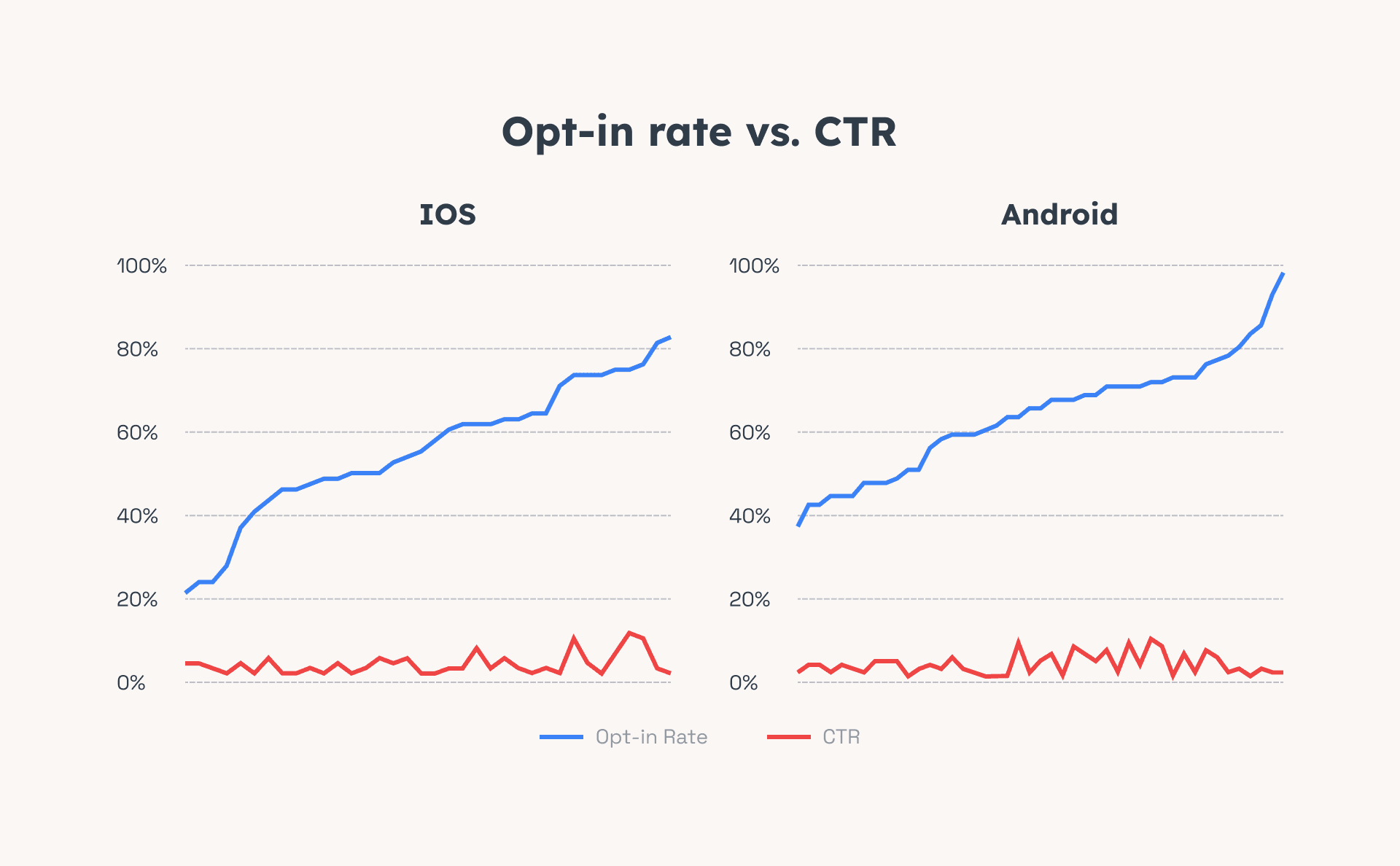
Practical takeaway: To reap the benefits of a high CTR, focus on increasing opt-in rates on iOS. This can be done by optimizing the timing of your pre-permission screens. Show the prompt when users are most interested—for example, right after they finish reading an article or a breaking news update.
Make the message clear about why push notifications matter, for example, getting exclusive stories. Highlight how many users already rely on your alerts to stay informed.
This approach works well for News apps because their audiences are already eager for notifications, as Janie Ho explains:
Unlike most brands, news apps have an audience actively looking for alerts. People want to know what’s happening or be entertained by a particular voice or authority. For brands or companies, it’s hard to engage the audience with promotional or informational pushes, when all the customers want is tactical info about their accounts.
Timing matters: Saturdays and mornings drive peak CTR
CTR by weekday
When it comes to news apps, timing does play a role in user engagement:
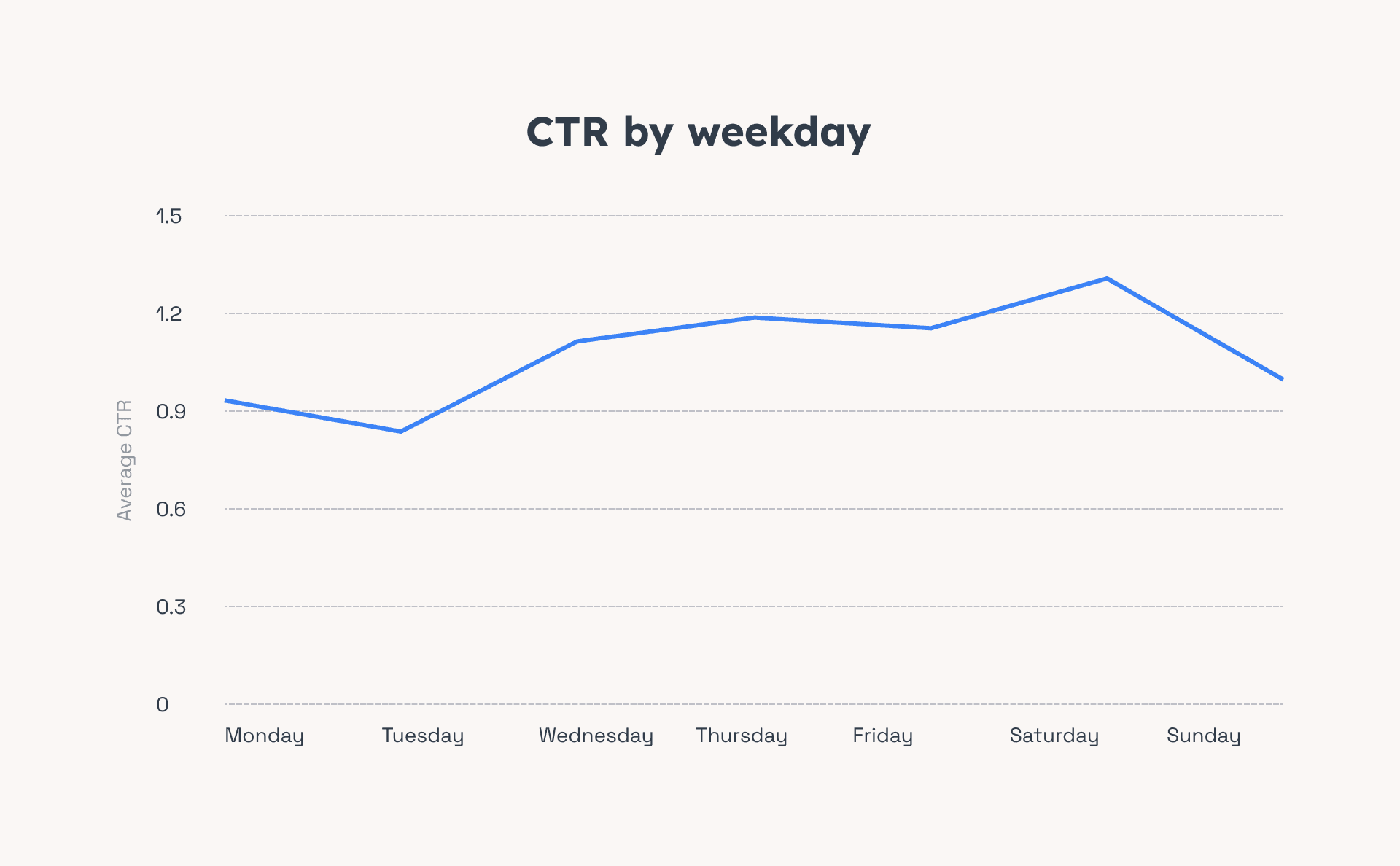
Analyzing CTR by day of the week, we found that Tuesday tends to perform the worst.
From there, engagement gradually increases, peaking on Saturday before dipping slightly on Sunday.
CTR by hour
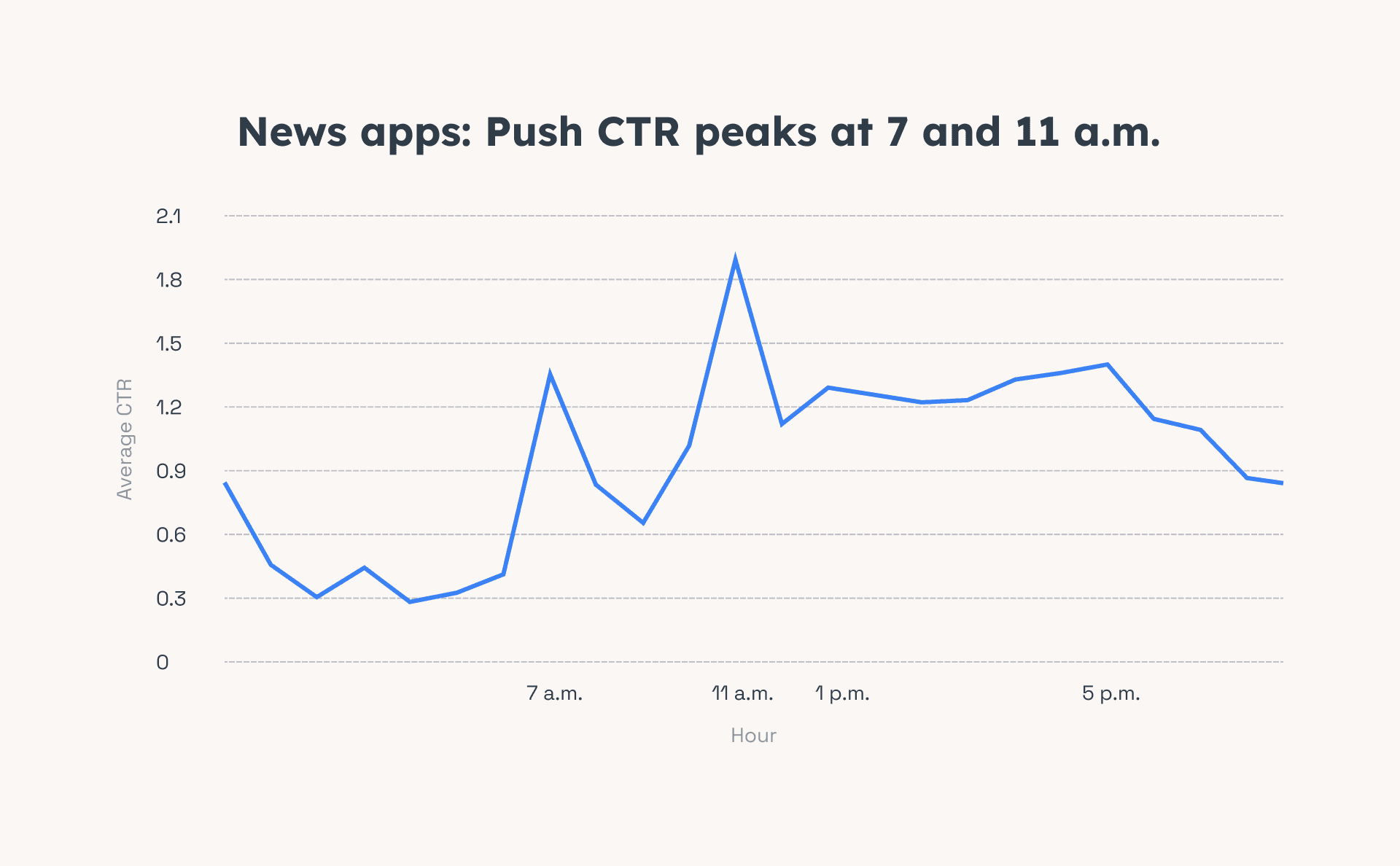
Looking at CTR by hour, the first spike in user interest appears around 7 AM—likely when users are catching up on headlines at the start of their day.
After a short decline, another noticeable peak emerges at 11 AM.
Throughout the afternoon, CTR holds steady at a moderate level, before gradually dropping off after 9 PM.
Practical takeaway: For better performance, align your push schedule with peak attention windows. Or you can completely automate your message delivery to each user’s peak attention time using Pushwoosh’s Best Time to Send feature.
Even so, nailing the timing is step one. To boost push CTR even further, focus on the content itself—starting with these expert-backed tips:
• Gather all your info—headline, subhead, the lede, maybe the nut (key data or the so-what)—and scan for a sharp quote snippet or takeaway.
• Cut it down to a few characters (!) within one to five minutes. A snappy subject line. A short, punchy, and, for features, dramatic body. It’s a brief blurb—on some platforms, real brief!
• Use images and subject lines in your push alerts—not everyone does this.
• Place a big-picture ‘so what’ in the subject or body. If it doesn’t entice the user, at least, it can inform them of an impactful or interesting stat or happening.
Sports alerts outperform politics in push engagement
We wanted to find out if the topic of a push notification makes a difference in how many people click. So we looked at how users reacted to major political and sports events during the time we gathered the data.
We used the average Z-score—a statistical measure showing how much a value deviates from the overall mean—to identify performance outliers.
Political events
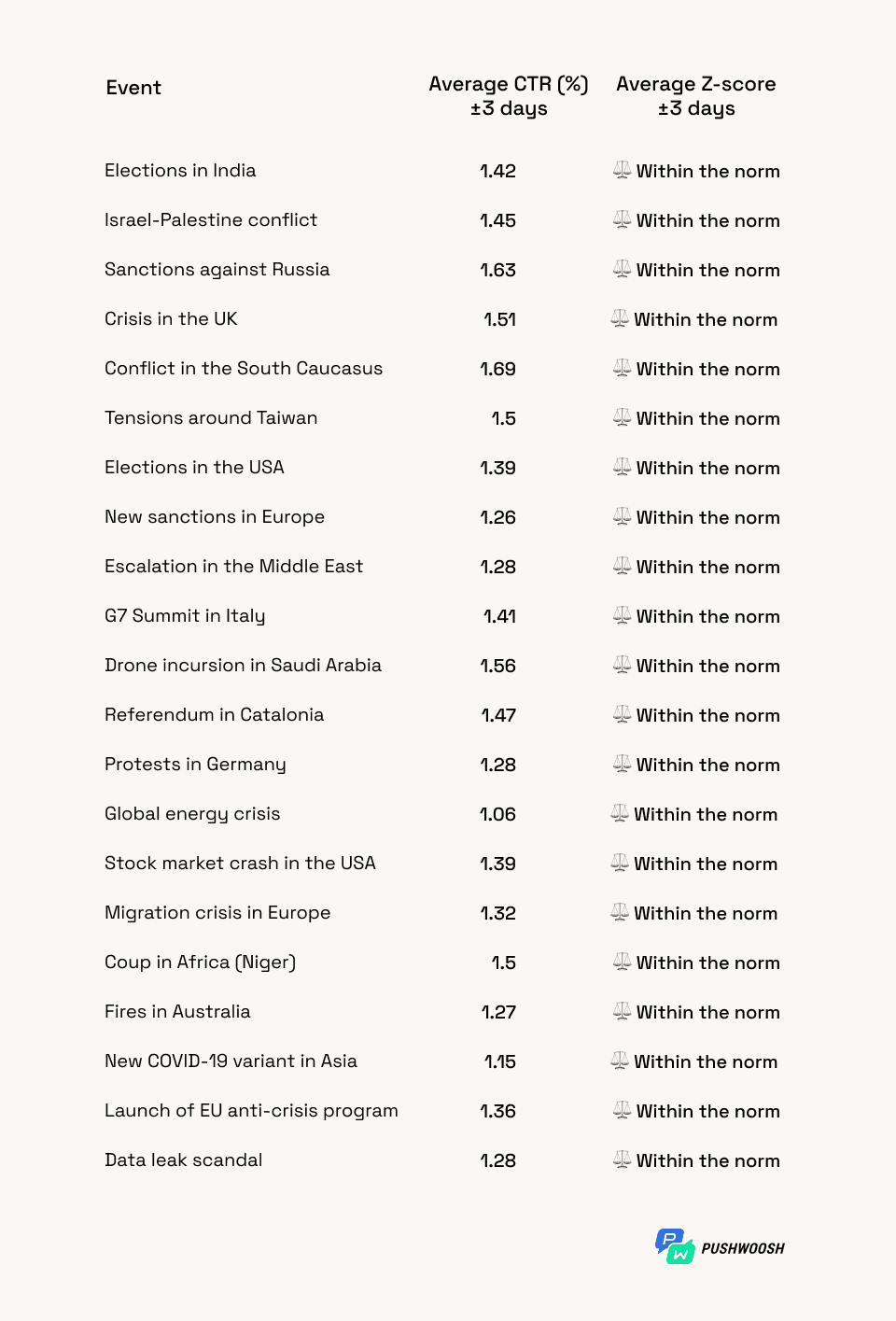
While one might expect political events to drive higher engagement, our data suggests otherwise: even major developments such as the US presidential election and the Israel–Palestine conflict did not lead to a noticeable increase in click-through rates.
This aligns with a broader observation in the industry:
Even with an eager audience, most alerts disappear into the ether. Standout push notifications above the benchmarks are rare and usually predictable by niche, section, or story type.
Sports events
Meanwhile, some sport events clearly stood out:
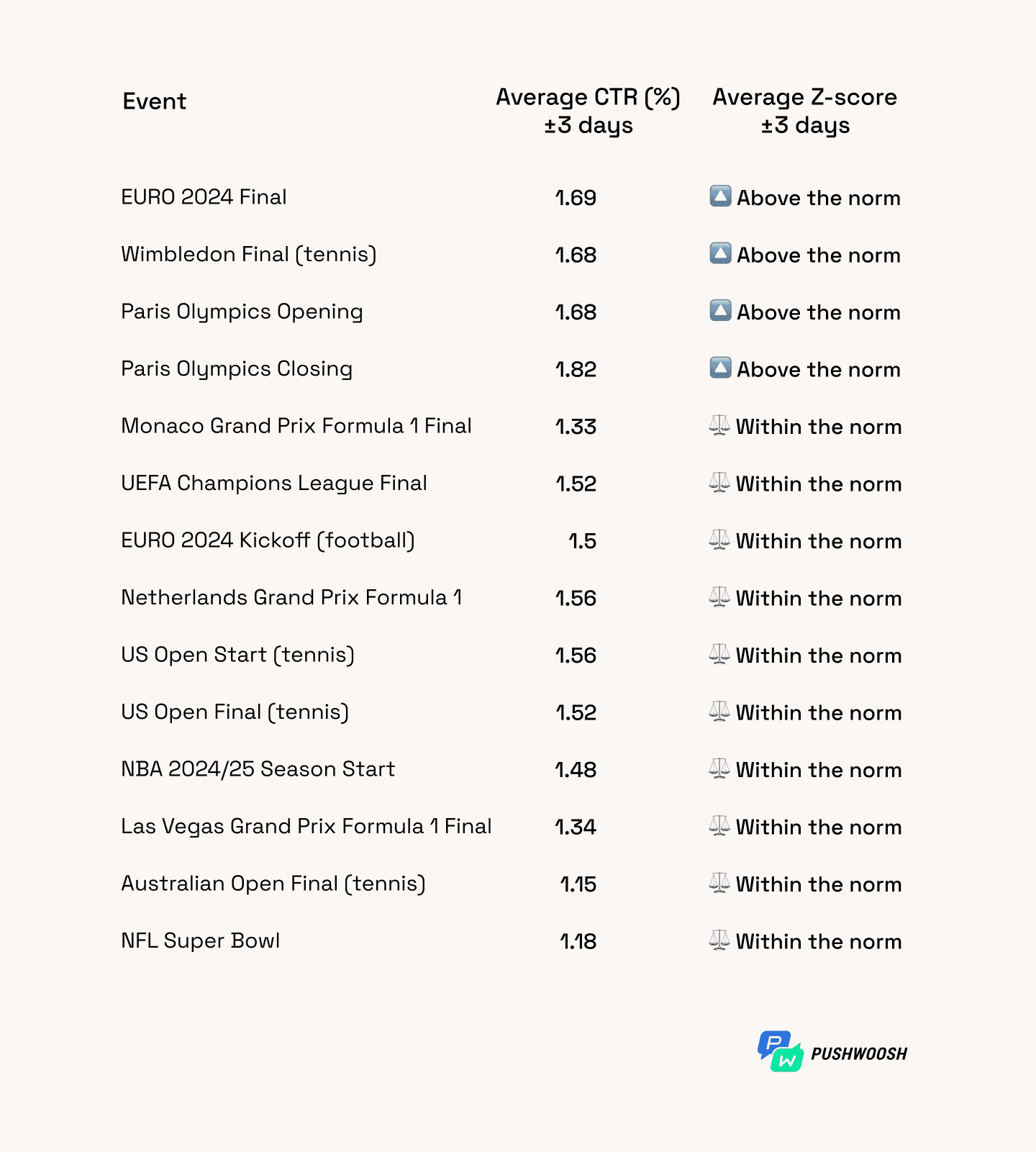
Push notifications around high-profile events like the EURO 2024 final, the Wimbledon final, and the opening and closing ceremonies of the Paris Olympics saw a marked uptick in CTR, all with Z-scores well above average.
These findings reflect what Janie Ho advises. She recommends regular review and team feedback cycles to surface what content is actually working:
I reviewed our pushes twice a week, analyzed what made them work, and shared the Top 10 with the team. From topic categories, to use of style elements, to the way of presenting things like data, titles, complex or unknown items — everyone should be on the same page about what works here.
Still, identifying winning formats isn’t just about the event itself—it’s about consistently analyzing patterns and refining delivery. As Janie Ho recommends:
Double down on the categories that do best for your audiences—but first, understand what makes them do well:
• Analyze your data and categorize the writing and quantity of pushes per section
• Write a brief weekly summary for your team with best-performing examples. Oftentimes, they feature terse quote snippets and tying the topic back to the reader. I also categorize the worst-performing push notifications and give the examples, because oftentimes success is just due to how it was written.
Small and mid-sized publishers lead in push notification CTR
We also analyzed how push notification performance varies depending on publisher reach:
| App size | Platform | CTR |
|---|---|---|
| up to 10 thousand | Android | 8.49% |
| iOS | 3.99% | |
| 10–50 thousand | Android | 3.95% |
| iOS | 3.26% | |
| 50–100 thousand | Android | 4.20% |
| iOS | 5.70% | |
| 100–500 thousand | Android | 6.64% |
| iOS | 3.98% | |
| 500 thousand–1 million | Android | 0.76% |
| iOS | 1.08% | |
| more than 1 million | Android | 2.22% |
| iOS | 1.61% |
It turns out that smaller and mid-sized apps see the strongest engagement, especially on Android.
As apps grow bigger, CTRs start to drop off, showing that larger reach doesn’t always mean higher engagement.
________________________________________________________________
Explore more news & media push notification data, including quarterly CTR trends and platform comparisons, in our Push Notification Benchmarks Study 2025.
Ready to transform your news app’s push strategy with data-driven insights and expert tips?


